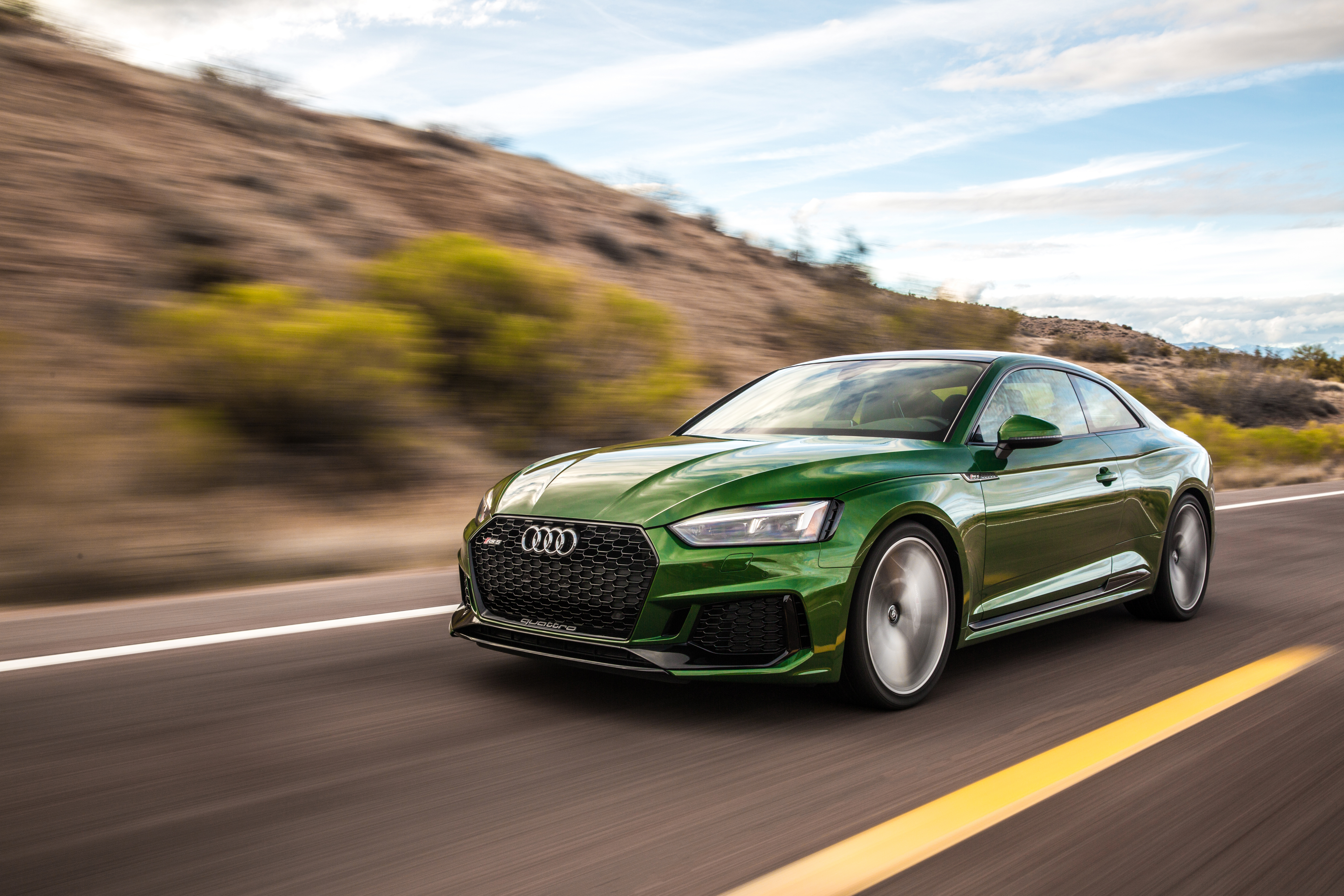
The Art of the Sub-Brand: Performance
Performance sub-brands give buyers something special
By Randy Lioz, Editor, Car-ED.com | July 2018
Carmakers love to produce “special” cars that appeal to an enthusiast audience. The market abounds with models that display a certain letter that indicates they’re ready to take on some of the most high-performance machines out there, and come out a winner. Many of these vehicles have four doors, or even an SUV body, yet underneath lurks the equipment that can enable a super-fast lap time at one of the world’s premier racetracks. Here we’ll take a look at the history of this trend, and what’s out there for enthusiasts in today’s market.
Where did the trend start?
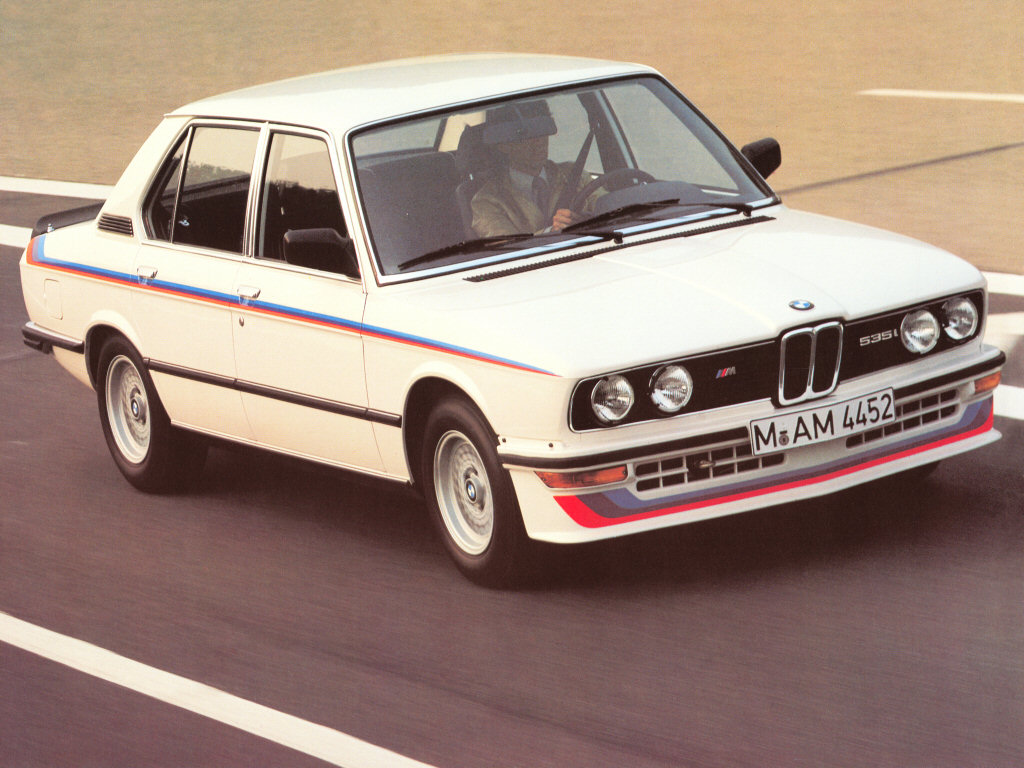
M535i, photo credit: BMW
Most enthusiasts credit BMW with kicking off the trend with its Motorsport division, which was shortened to just M. While its origins were in racing, in the late-1970s M started developing cars for the road, the first being its famous M1 supercar. But the first car that really set the template for the models that abound today was the 1979 M535i, a pumped-up version of the first-generation 5 Series. The car pictured at right displays the M division’s tri-color striping.
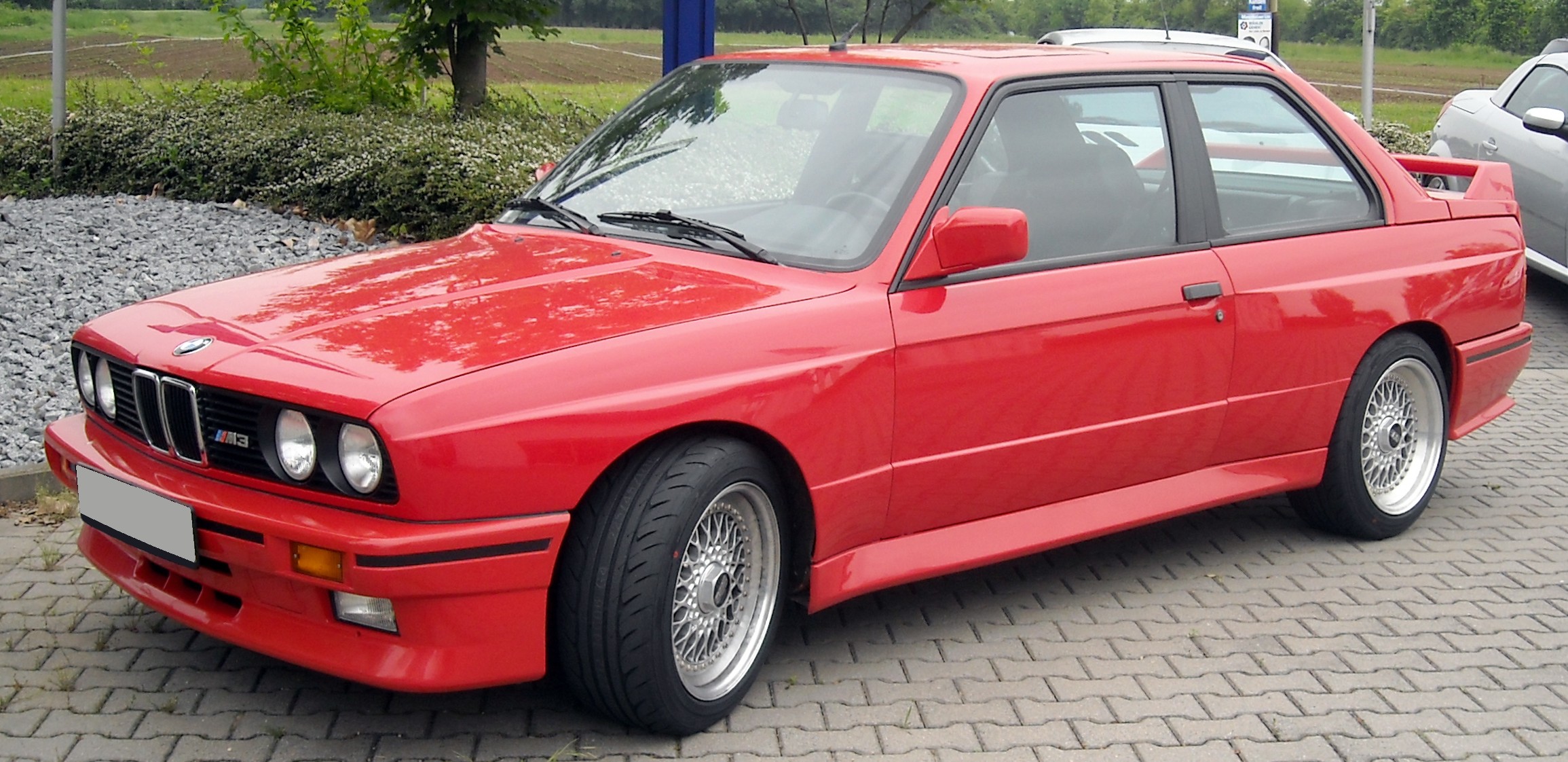
E30 M3, photo credit: Rudolf Stricker
From there BMW began tuning an increasing number of its models, with some particular versions achieving legendary status, like the M3 from 1986, with its widebody fenders, and the 1998 M5 with its 400-horsepower 4.9-liter V-8 engine.
But the early days of the trend weren’t just about BMW. Mercedes-Benz’s in-house tuner, AMG, started out as an independent shop in 1967, but was absorbed into Mercedes starting in 1999. Mercedes-AMG has become one of the most prolific producers of factory hot-rods, producing AMG-tuned versions of nearly every model in their lineup, even the G-Class off-roader.
Since that time nearly every brand on the market has launched its own vehicle tuning sub-brand, from domestic brands like Cadillac, with its V brand, to Japanese automakers like Subaru, whose Subaru Tecnica International (STI) outfit also began as a racing division.
While the trend first blossomed among luxury brands, particularly the Germans, it has filtered down to the mainstream market. The German luxury brands, though, still rule the roost when it comes to the sheer number of models available. Currently the E-Class Coupe is the only Mercedes model that doesn’t have an AMG version, simply because the E53 Coupe hasn’t hit dealers yet. Historically BMW and Audi have tuned nearly every model they make with M and S/RS models, and their lineups are still quite extensive.
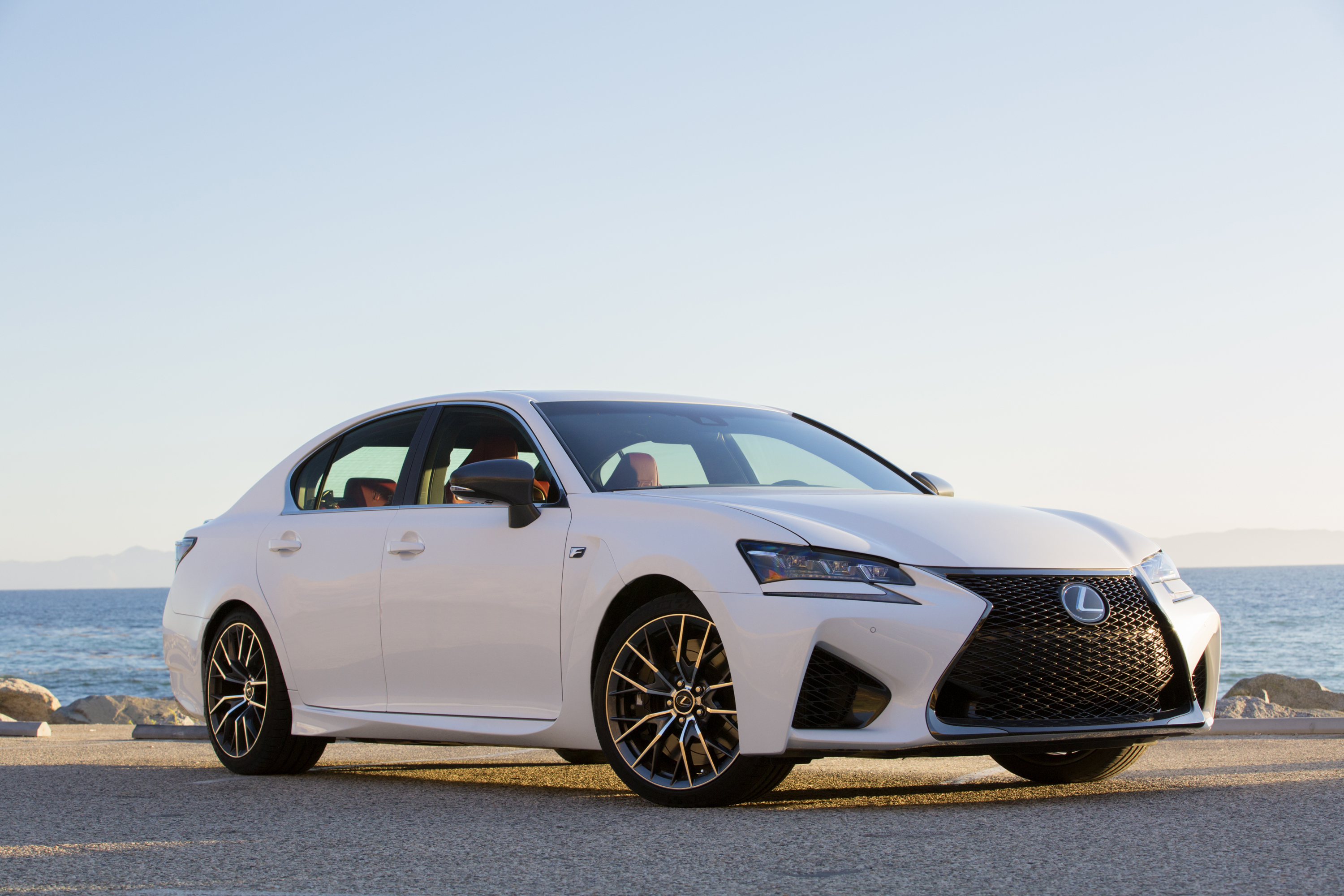
2018 Lexus GS F, photo credit: Toyota
The other players in the market are more reserved in their approach, tending to pick a single model–like the Golf R from Volkswagen’s R brand–or a small handful–Lexus currently has F variants of only the RC entry coupe and the GS mid-level sedan.
It should certainly be noted that domestic carmakers have also been offering the public special go-fast versions of their cars for many years, like the Ford Mustang Shelby GT350–a nameplate revived for the current version–and Plymouth Hemi-Cuda, but the Germans pioneered the art of the performance sub-brand in the form that we see today, which has been so successful that everyone wants a piece of the action.
Do they all take a similar approach?
That’s a complicated question. Most of these brands like to offer a full package of upgrades, from more power to better handling, and more stopping power, too.
But the auto companies have recognized that there’s plenty of demand out there for a more affordable approach that offers either more modest performance upgrades, or focuses mostly on the styling aspects. These may include upgrades to the the vehicle body like larger front air intakes and wheels, and other pieces of visual flair. This sets up a three-tier system that’s laid out in more detail in the chart below.
Brands deal with this progression in different ways. Audi has one of the most well-defined schemes, and it’s a good base-line to understand others in the industry. Its top tier of products is the RS models, which are meant to compete directly with BMW M models, and these are only available for a select few vehicles–currently the RS 3 entry-level sedan and RS 5 compact coupe. Audi’s second tier is the S lineup, which is much more extensive. And the S-Line range of visual upgrades is available on many trims across its brand.
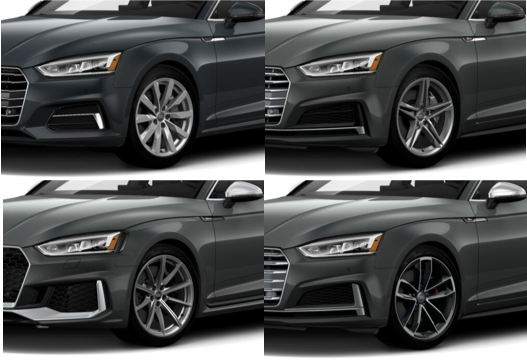
Clockwise from top left: A5, A5 S Line, S5, RS 5; photo credits: Audi
We can look at Audi’s compact coupe lineup as an illustration. The base A5 comes with a 2.0-liter four cylinder turbo engine, with 252 horsepower and 273 lb-ft of torque. The first upgrade, to the S-Line sport package, keeps the engine the same, but adds special wheels, upgraded suspension and the special bumpers you see, which have larger intakes below the headlights, plus S-Line badges on the fender. Not visible here are the sport seats and illuminated S-Line door sills.
The performance really starts to kick up with the S5, which gets a 3.0-liter V-6 engine–also turbo–rated at 354 hp and 369 lb-ft, which brings the car’s 0-60 time down from 5.6 seconds to 4.4. One of Audi’s signature design cues for its performance models is the silver mirror caps, and S5s can get different wheel upgrades that aren’t available on the A5. There are also exclusive chassis upgrades available, like a sport adaptive damping suspension and dynamic steering.
The RS 5 is the pinnacle of this coupe model, and its performance is extreme. Its 2.9-liter twin turbo V-6 has 444 hp and 443 lb-ft of torque, rocketing it to 60 mph in 3.7 seconds. It also gets an additional gear in its transmission (bringing it to 8 speeds), and a lowered suspension, plus standard 19″ wheels–the S5 has 18″ wheels. Visually the RS 5 is quite impactful, with completely unique and aggressive styling, including widened fenders. You can even see little vents on the outer edges of the headlights, which are full-LED units.
Audi’s approach is a good representation of the performance lineups common in the industry, especially among luxury brands.
Does anyone do it differently?
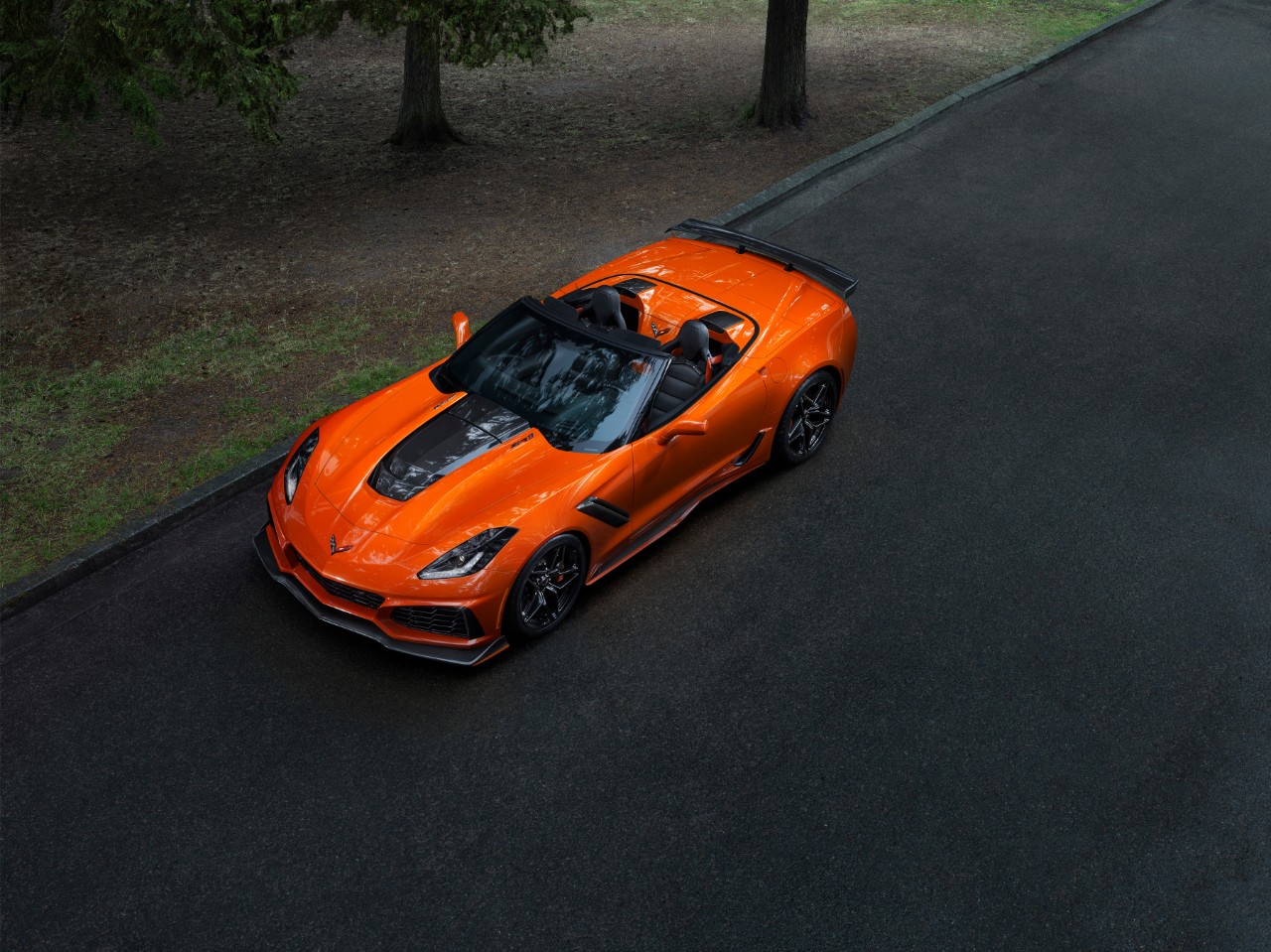
The 755-horsepower 2019 Corvette ZR1 Convertible, photo credit: GM
Certainly. The schemes that the domestic brands use tend to vary more widely. While Cadillac has tried to emulate the typical luxury approach, with its V and V-Sport lines, Chevy has different schemes depending on the model, like the Camaro ZL1 and Corvette ZR1 that sit at the top of those lineups.
Fiat-Chrysler is unique in that it uses the SRT label for all of its domestic-brand tuner models, whether from Dodge, Chrysler or Jeep, though they use a grab bag of names and numbers to describe all the models under that umbrella, like 392, Hellcat, Demon or Trackhawk.
Ford has a similar setup to Audi for the Focus, with the top-tier RS and the second-tier ST, while using the Sport designation on other models for trims that just get styling tweaks. The Mustang is a completely different story, though. It uses the GT350 moniker for the top version, even though its tuned by the same SVT division as the other performance models.
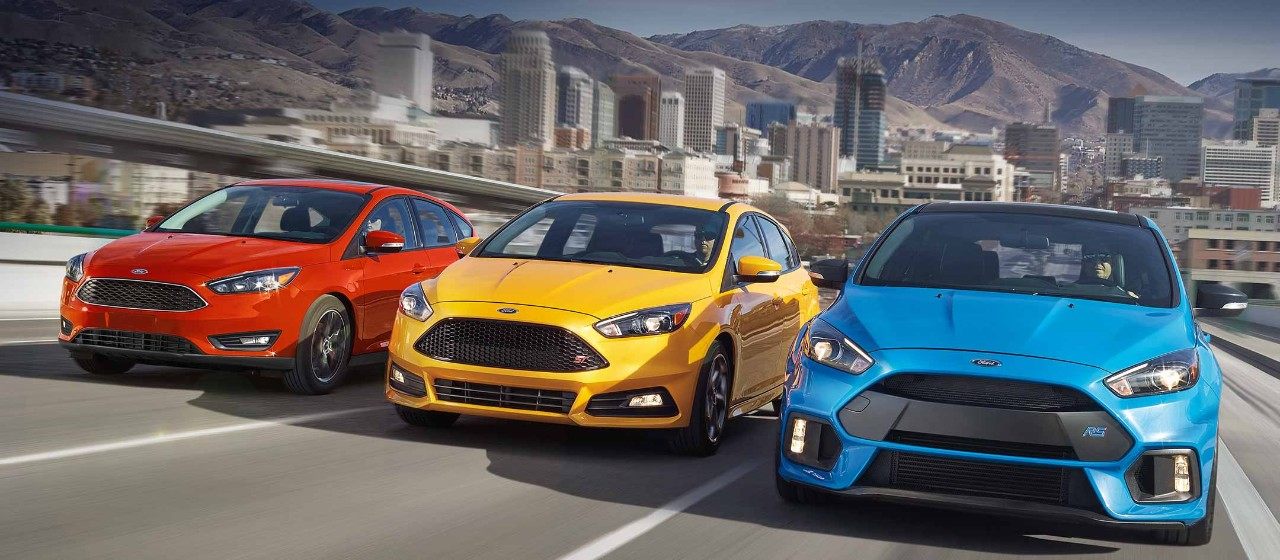
Left to right: Ford Focus SEL, ST and RS; photo credit: Ford
What else is there to know?
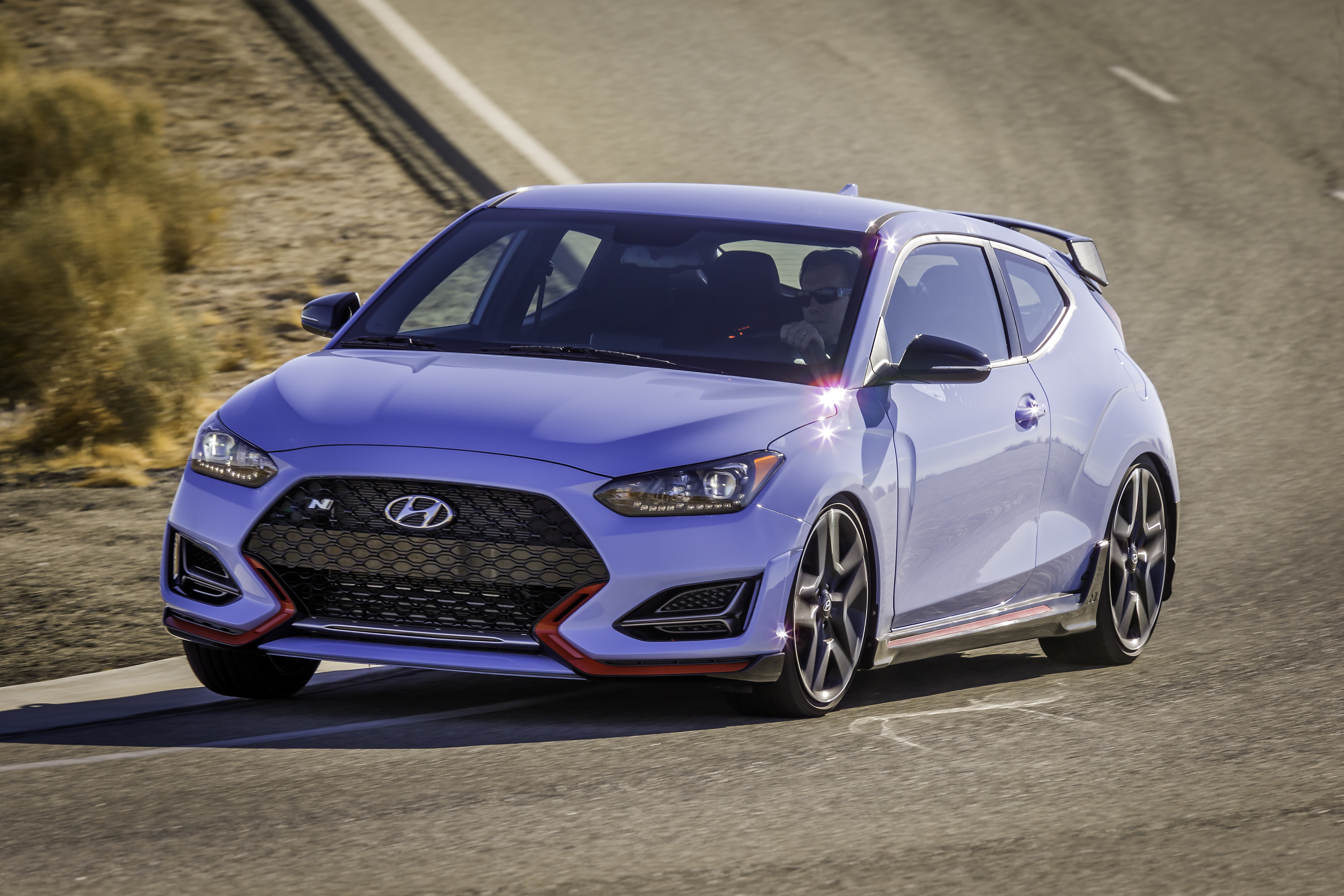
2019 Hyundai Veloster N, photo credit: Hyundai
There’s a lot more we could cover, but for the sake of simplicity, we’ll just tell you what’s changing. There are always new performance sub-brands on the horizon, like Hyundai’s recently-introduced N performance division–you may have seen ads for it around the field during the soccer World Cup. The Veloster N was introduced at this year’s Detroit Auto Show, and Hyundai says N is more about fun than Nürburgring lap times.
Infiniti has been trying to work out its performance brand strategy for a while now, and its Infiniti Performance Line (IPL) version of the G37 coupe and convertible, sporting an upgraded 348-hp engine, has given way to a new Red Sport trim for the Q50 sedan, which has 400 horsepower, putting it somewhat between the S and RS levels at Audi, while being priced around the same as the S4.
Acura is rumored to be bringing back Type S models by 2020, though it may be a while before the brand goes more aggressive to resurrect its hallowed Type R models. For now that badge stays with its non-luxury stablemate Honda.
In other parts of the world, Toyota has been marketing a line of performance cars under the GR label, due to its partnership with Gazoo Racing. There’s a top MN trim (Meisters of the Nürburgring), with the regular GR versions being the second tier, and a GR Sport trim that will offer just the styling tweaks. It remains to be seen whether GR will go full-bore in the U.S. Toyota enthusiasts are more familiar with the TRD (Toyota Racing Development) parts brand, but this is primarily used for off-road trucks, like the TRD Pro models.
Check out the chart below for a full rundown of performance sub-brands, and some examples of vehicles from each.
Brand |
Top Tier |
Example |
2nd Tier |
Example |
Styling |
Example |
| Acura | Type R | None currently | Type S | None currently | A-Spec | ILX A-Spec |
| Alfa Romeo | Quadrifoglio | Giulia Quadrifoglio | ||||
| Audi | RS | RS 5 | S | S5 | S-Line | A5 |
| BMW | M | M2 | M1 | M240i | M Sport | 230i |
| Cadillac | V | CTS-V | V-Sport | CTS V-Sport | ||
| Chevrolet | ZL1 / ZR1 | Camaro ZL1 | SS | Camaro SS | RS | Camaro LT |
| Chrysler/ Dodge/Jeep | SRT | Challenger SRT Hellcat | R/T | Challenger R/T | GT | Challenger GT |
| Fiat | Abarth | 500 Abarth | ||||
| Ford | RS / GT | Focus RS | ST | Focus ST | Sport | Fusion Sport |
| Genesis | Sport | G80 Sport | ||||
| Honda | Type R | Civic Type R | Si | Civic Si | Sport | Civic Sport |
| Hyundai | N | Veloster N2 | R-Spec / Sport | Veloster Turbo R-Spec | ||
| Infiniti | IPL | None currently | Red Sport | Q50 Red Sport 400 | ||
| Jaguar | SV | F-Type SVR | R / S | XE S | R-Sport / R-Dynamic | E-Pace R-Dynamic |
| Land Rover | SV | Range Rover Sport SVR | R-Dynamic | Velar R-Dynamic | ||
| Lexus | F | RC F | F Sport | NX 300 F Sport | ||
| Mercedes | AMG S3 | C 63 S | AMG | C 43 | AMG Line | C 300 |
| MINI | JCW | JCW Hardtop 2-door | S | Cooper S Hardtop 2-door | ||
| Nissan | NISMO | 370Z NISMO | SE-R | None currently | ||
| Porsche | GT | 718 Cayman GT44 | GTS | 718 GTS | ||
| Subaru | STI | WRX STI | tS | BRZ tS | ||
| VW | R | Golf R | R-Line | Jetta R-Line | ||
| Volvo | Polestar | S60 Polestar5 | R | None currently | R-Design | S60 R-Design |
1 BMW uses M for both tiers but in different model names
2 The Veloster N will be available in the Fall
3 The AMG hierarchy varies between models
4 2019 model launching next year
5 2018 model; all-new 2019 Polestar is yet to be released